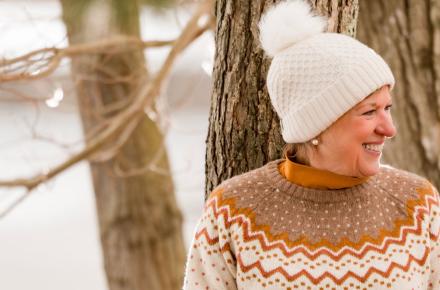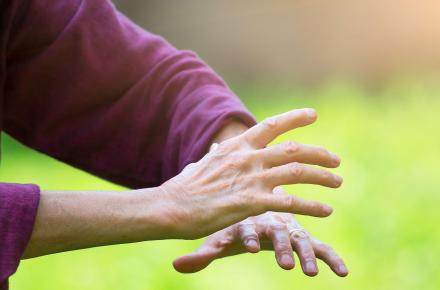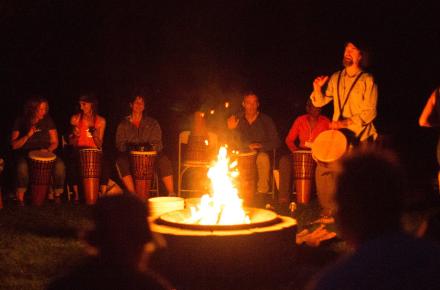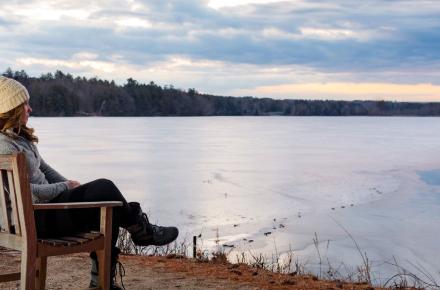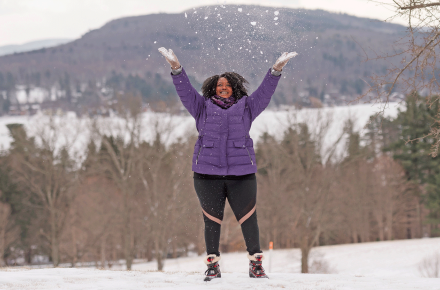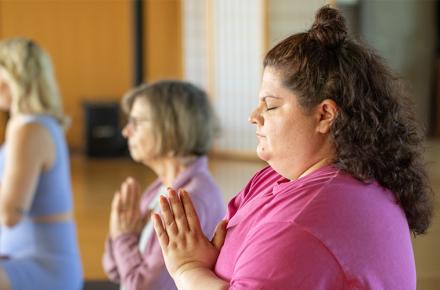A Vision for the New Year
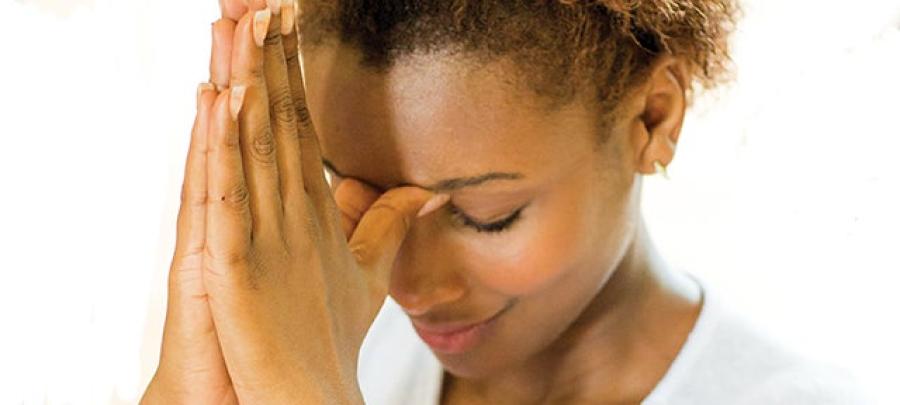
New Year's is a time of transition, when we’re teetering on the verge of new opportunities and possibilities. Simultaneously, we’re experiencing the tail end of 365 days filled with defining, transformative moments, and the imprints of these experiences—be they gains, losses, successes, setbacks—can be most palpable when we reflect upon them this time of year. Luckily, our yoga practice can help us find our footing.
“The awareness that we’re always in flux is heightened this time of year, so it’s important to keep coming back to that,” says yoga teacher Rolf Gates. “Every new year is an opportunity to reflect upon who we are, what we experienced, and what we want to accomplish. Through reflection comes awareness, the foundation from which skillful action can arise.” Committing to our yoga, meditation, and mindfulness practices can both ground us and open us up to the new possibilities, allowing this time of transition to also be a time of transformation.
Sadie Nardini, founder of Core Strength Vinyasa Yoga, echoes Rolf’s sentiments on the importance of cultivating unity, harmony, and expressiveness during this time. “The new year is a reminder to stay connected to the core of your being and to live out loud, whatever life may bring,” she says. “As we step into the new year, we can apply putting inspiration into action and finding our authenticity. It’s not so much about having to change who you are, but rather about being more yourself as you move through life.”
Sadie notes that Patanjali’s Yoga Sutras, one of the seminal texts of the yoga tradition, offers tools that can help us put our inspiration into action. Tapas—one of the niyamas, or observances, from the Yoga Sutras, which Sadie defines as “making space, new energy, and presence”—can be an especially powerful practice to welcome in the new year. One way to build tapas, which also translates as “heat,” is to create space for the things you’re passionate about. As the year draws to a close, Sadie recommends reflecting upon what truly moves you and motivates you—what are the uncharted areas you want to explore?—and looking at how you can bring some of that fire into your life. At the same time, Sadie adds, notice what might be extinguishing that fire, and explore how you can remove those obstacles.
When it comes to obstacles, Aruni Nan Futuronsky, Kripalu Yoga teacher and Senior Life Coach, believes that the expectations we put upon ourselves this time of year can derail us. Though she says it’s good to have New Year’s goals, Aruni suggests looking at them through a mindful, yogic lens. Instead of making resolutions, which can be constricting, she frames them as intentions. When we pressure ourselves to have certain outcomes without room to falter, we feel defeated if we end up, say, skipping the gym or having that slice of chocolate cake. Setting an intention offers a more compassionate approach. “It gives us permission to practice, which is not about getting it ‘right’ but about cultivating patience and tolerance with ourselves on our path, to soften around our expectations,” Aruni says.
A powerful way to set an intention is through a ritual that brings you joy and clarity. Sadie suggests a New Year’s “deep clean”—she enjoys hosting and participating in “cleaning parties” with friends around New Year's. As you shed light on those hidden places—in the closet, under the bed—you’re not only removing physical clutter but also taking the opportunity to clear away what’s not serving you, making space for the fresh and the new. Sadie also practices soji—a Japanese cleaning ritual that entails taking time every day (preferably 20 minutes in the morning) to clean your room, make your bed, and organize and clarify your space in a mindful, focused way.
Similarly, Rolf sets the tone for his year ahead through a ritual. Every November, Rolf and his wife, Mariam Gates, create a vision board on which they lay out their dreams using words and images. “In the fall, we start writing down our intentions for the next year,” he says, which gives them a full three months to shape them into goals that answer questions like, Who do I want to be? What do I want? What kind of experience do I want to have? Assessing the year by fall while planning ahead for the future gives him ample time to set intentions before the holiday rush.
What if you feel apprehensive about the uncertainty of a new year, or you’re mourning a loss from the year that’s about to close? “Optimism is a choice,” Rolf says. “We have the power to decide how we choose to cultivate our outlook, if not the circumstances we’re in.” Optimism and inner stillness go hand in hand, he says, so it’s important to choose experiences that connect to the core of our being, such as yoga and meditation. These tools can sustain us, usher us through these transitions, and give us more clarity as we move from one year to the next. “We label our experiences ‘good’ or ‘bad,’ but yoga and meditation makes us consider our assumptions. This is the time of year to see the fullness of our lives and to cultivate a mind that’s been made stronger by practice,” Rolf says.
Ultimately, being ready for the new year is being ready for life, preparing ourselves for whatever happens with an open heart—while also establishing the resolve to pursue our aspirations. “Show up with full integrity, no matter what is happening to you—joy, loss, anticipation,” Rolf says. “Where you put your vision is where your life goes.”
© Kripalu Center for Yoga & Health. All rights reserved. To request permission to reprint, please e-mail editor@kripalu.org.





























